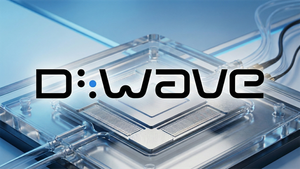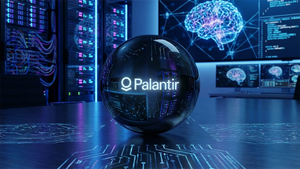Microsoft is new cybersecurity titan, challenging big tech rivals

You might not think of Microsoft Corp. (NASDAQ: MSFT) as a leader in the cybersecurity space, but the company has been making big strides in that part of the tech industry.
As with many business shifts, Microsoft increased its focus on security after a 2021 incident in which hackers accessed emails from the U.S. departments of Commerce and State, as well as those from private enterprise and other agencies.
That year, Microsoft rolled out its Secure Future program to improve cloud security.
More than two years later, Microsoft is increasingly a competitor to more traditional cybersecurity companies such as CrowdStrike Holdings Inc. (NASDAQ: CRWD), Palo Alto Networks Inc. (NASDAQ: PANW), as well as fast-growing upstarts like Zscaler Inc. (NASDAQ: ZS) and Okta Inc. (NASDAQ: OKTA).
Microsoft reeling in $20 billion from cybersecurity software
In January 2023, Microsoft said its cybersecurity business was fetching about $20 billion annually, up $5 billion in just a year.
Historically, Microsoft was not viewed as particularly strong when it came to cybersecurity, never mind being seen as a viable vendor of cybersecurity services. The 2021 incident was a wake-up call, and the company has moved extraordinarily quickly to turn things around, and even develop a robust revenue stream.
Microsoft has competition from another tech titan that’s known for other services besides cybersecurity: Amazon.com Inc.’s (NASDAQ: AMZN) Amazon Web Services has also rolled out its own suite of security software products.
Microsoft includes its cybersecurity technologies in its Azure cloud computing and Office 365 platforms. That’s an advantage that Microsoft shares with Amazon, as it’s able to wrap cybersecurity fees into prices for productivity and cloud software. Presumably, not many buyers would be upset about paying for cybersecurity services.
Growing cloud business means more security threats
In its most recent annual report filing, Microsoft addressed cybersecurity challenges inherent in its software products. It noted that its cloud offerings face competition from the other technology stocks such as Amazon, Alphabet Inc. (NASDAQ: GOOGL), International Business Machines (NYSE: IBM), Oracle Corp. (NYSE: ORCL) and VMware Inc. (NYSE: VMW), as well as various open-source software programs.
“We believe our cloud’s global scale, coupled with our broad portfolio of identity and security solutions, allows us to effectively solve complex cybersecurity challenges for our customers and differentiates us from the competition,” Microsoft said.
Google became more of a cybersecurity rival in 2022 when it acquired cybersecurity specialist Mandiant in a deal valued at $5.4 billion. However, Google’s cybersecurity business has not yet grown to the size of either Amazon’s or Microsoft’s, although investors shouldn’t be surprised if Google plays a fast game of catch-up.
For example, in April 2023, Google reported that its cloud-computing business was profitable for the first time. Alphabet has been investing heavily into that business segment to compete with Microsoft and Amazon.
Why is that significant for cybersecurity? Simple: With a growing cloud business comes growing cybersecurity threats. Alphabet doesn’t want to face an embarrassing situation like Microsoft did in 2021 with the email breaches.
New threats related to AI investments
Meanwhile, the growing prominence of AI is also increasing the need for the tech titans to bolster cybersecurity capabilities.
As a major financial backer of OpenAI, which operates generative AI platform ChatGPT, Microsoft also faces the possibility of embarrassing breaches. That’s aside from a lawsuit filed by the New York Times Co. (NYSE: NYT) on December 27, alleging that Microsoft and OpenAI were committing copyright infringement by using the Times’ content without permission.
Watch for that lawsuit, and potentially others from big media companies, to be the catalysts for even greater cybersecurity guardrails.
Microsoft doesn’t break out cybersecurity revenue in its quarterly or annual reports, so analysts can only base forecasts on the company’s sporadic revenue announcements.
However, Microsoft’s revenue growth has been accelerating in the past three quarters, and it’s likely that increased cybersecurity business is a contributing factor.
The fast-growing cybersecurity industry
Industry-wide, cybersecurity spending is only set for growth.
Although Microsoft is tracked as an enterprise software maker, the cybersecurity sub-industry, home to stocks such as CrowdStrike, Zscaler and Palo Alto Networks, has been moving up in the ranks in the past three months, as those stocks and others soared.
More News
View More




Recent Quotes
View MoreQuotes delayed at least 20 minutes.
By accessing this page, you agree to the Privacy Policy and Terms Of Service.